1651
Following the execution of King Charles I, in an attempt to regain the lost throne of the Stuarts, Charles II sailed for Scotland to ally himself with the Covenanters against their mutual enemy, Oliver Cromwell. He found it a humiliating experience. Their dour form of Presbyterianism was forced on him and the young Charles, with characteristic cynicism, found he had "to repent me that I was ever born," On 3 September 1650, the Covenanters were defeated at the Battle of Dunbar by a much smaller force led by Oliver Cromwell. Charles was nevertheless crowned King of Scotland at Scone.
In January 1651, with the Parliamentary forces threatening the royalist position in Scotland, the decision was reached to mount an attack on England. With many of the Scots refusing to take part, and with few English royalists joining the force as it moved south into England, Charles advanced to confront Cromwell at the head of a Scottish army, he was to suffer defeat at the Battle of Worcester, the last battle of the Civil War, on 3rd September 1651. The battle culminated in a complete rout of the Royalist forces.
The River Teme at the Battle of Worcester site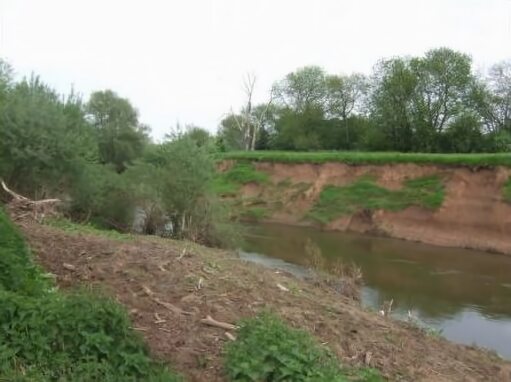
Prior to the battle Cromwell constructed two pontoon bridges over the Severn and the Teme close to their confluence. The Parliamentarians then forced a passage across the Teme and the Royalist army, although resisting stubbornly, began to be steadily pushed back. Cromwell decided to divert reinforcements from the eastern side of the town over the Severn pontoon bridge to crush the staunchly resisting Royalists. Charles, surveying the course of the battle from the top of Worcester cathedral's tower realised that the eastern flank of Cromwell's army was now exposed to attack and ordered an advance on the Parliamentary forces to the east of the city, in which he himself took part.
The Royalist force advanced through Worcester's Sidbury Gate and covered by their own artillery, charged the Parliamentary forces uphill. The Duke of Hamilton attacked the Parliamentary lines at Perry Wood. The Royalist cavalry, situated on Pitchcroft meadow on the northern side of the city, failed to receive orders to go to their aid. The Duke of Hamilton had his head blown off and Charles had two horses killed under him in the desperate melee. Cromwell realising the pressure his east flank was under, returned over the Severn pontoon bridge with three brigades of troops to reinforce it and the Royalists were finally forced into retreat back toward Worcester. Arriving back in the city, Charles found Royalist troops already laying down their arms, despite his admonitions "I command you - upon your honour and loyalty - charge!" they refused to advance on the enemy.
Scots Memorial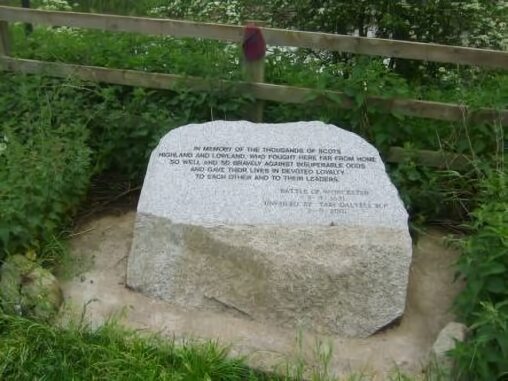
Fort Royal, a hill to the southeast of Worcester, was stormed by the Parliamentarians, who turned the Royalist guns to fire on Worcester. As nightfall descended, Worcester's defences were stormed. Cromwell finally broke into the city and Charles was forced into flight. An estimated 3,000 Scots died in the battle, while a further 2,000 were captured and sent to the colonies in North America. A memorial to the Scottish troops who died in the battle was erected at the old Powick Bridge. Consisting of a two-ton block of Scottish granite, it was unveiled by the MP Tam Dalyell, whose ancestor had fought at Worcester.
Charles, who escaped through the northern, St. Martin's Gate, at Worcester with a few followers, which included the Duke of Buckingham, Lauderdale, Lord Wilmot and the Earl of Derby, then spent six desperate weeks as a fugitive in hiding in England. The fleeing Royalists stopped after a five-mile ride at an inn in Ombersley (now known as the Kings Arms) for refreshments. On the Earl of Derby's suggestion, Charles rode north to hide in the isolated Brewood Forest, at the Boscobel estate, owned by the Catholic Giffard family, one of whom, Charles Giffard, was among the party of gentlemen who accompanied the king. It was considered the safest option that Charles should travel almost alone and the party accordingly separated near Hartlebury. Lord Derby proceeded towards Kidderminster, where he was captured by a troop of Parliamentary cavalry and later executed.
The king arrived at Whiteladies on the Boscobel estate in Shropshire, at dawn on the 4th of September. The Penderel brothers were presented to him, William, tenant of Boscobel House; Richard, Humphrey, a miller at White Ladies; John, a forester, and George, a servant employed on the estate. Charles divested himself of the George he was wearing, which he gave to a member of his party, Colonel Blague, (it was later returned to Charles in France by Blague) he had his hair cut short to evade capture and donned leather breeches and a felt hat, imitating a country accent. After the Restoration, the king loved to regale his friends with nostalgic accounts of his miraculous escape. While the large timber-framed nunnery at Whiteladies no longer exists, the remains of the nunneries medieval church and the nineteenth boundary wall remain.
Whiteladies Priory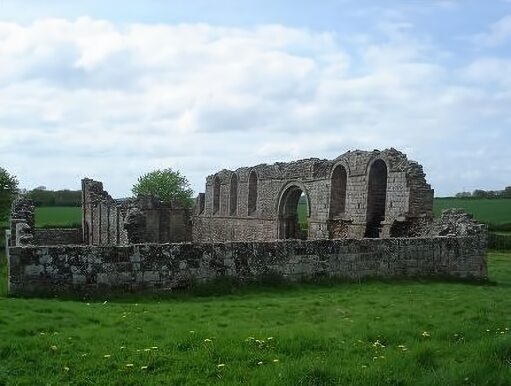
By the time the sun rose, the house at Whiteladies was no longer considered safe and after spending all day in a nearby wood, known as Spring Coppice, where he was narrowly missed by search parties, Charles set off at nightfall, with Richard Penderel in attendance in an attempt to cross the Severn into Wales. After being chased by a miller, made nervous due to the fact he was sheltering Royalists, the king and his companion discovered the crossing of the Severn was closely guarded by Cromwell's patrols and after spending the night in a barn owned by Francis Wolfe of Madeley, were forced to turn back.
Whiteladies Priory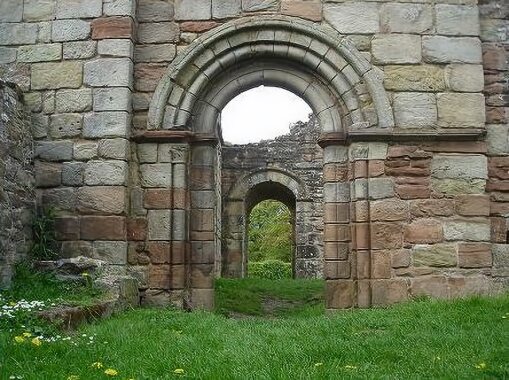
Charles took refuge at Boscobel House, where he narrowly evaded capture by famously hiding in an oak tree for the course of a day with Major Carlis, consuming large quantities of beer, bread and cheese while praying he would avoid detection by the Roundhead troops which scoured the area. The area surrounding Boscobel House in Charles' day was much more thickly wooded than it is today, the 'royal oak', once part of the wood, now stands in a field. The present lightning shattered tree, surrounded by a high metal fence, is not the original oak, which was destroyed by souvenir hunters in centuries-long gone, but it is said to be a sapling of the original and is believed to be two to three hundred years old.
Boscobel House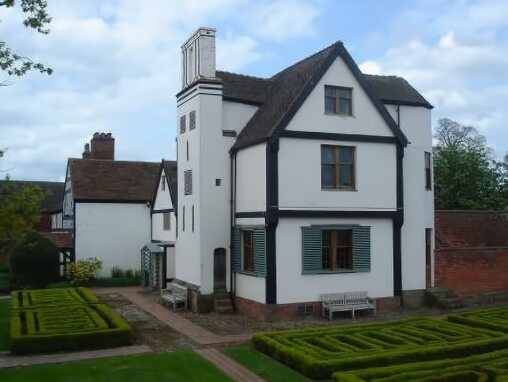
The king returned to Boscobel House at nightfall, where he had supper and spent the night in a priest hole in the attic, which may still be seen at the house today. Since the king was a tall man, 'over two yards high' according to the Parliamentary wanted posters, it must have been highly uncomfortable. The following day Charles spent reading in an arbour at Boscobel, which topped an ancient mound in the garden, which also survives to the present day. Boscobel House was built in around 1632, when John Giffard of Whiteladies converted a timber-framed farmhouse into a hunting lodge. The Giffard family were Roman Catholics, at a time when many suffered persecution for their faith. Tradition states that the true purpose of Boscobel was to serve as a secret place of shelter for Catholics. The house contains a number of priest holes and at the time that Charles stayed there a room in the loft was used as a Catholic chapel.
The lounge at Boscobel House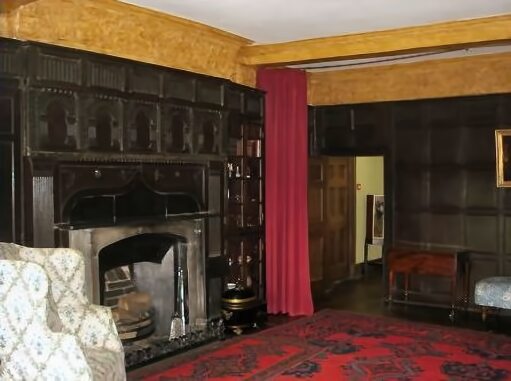
Charles left Boscobel mounted on an old mill horse and was accompanied by all five Penderel brothers and Francis Yates, a servant of Charles Giffard, he proceeded to take refuge at nearby Moseley Hall, where he rejoined Lord Wilmot, who was already hiding out there. Moseley Hall was the home of Thomas Whitgreave, and it was here where he made the acquaintance of Father Huddleston, a Roman Catholic priest, who gave up his room and his hiding place at Moseley for the King. Parliamentary troops arrived at the hall and accused Whitgreave of fighting for the Royalists at Worcester, he had not taken part in the battle and managed to convince them that this was the case when his neighbours backed him up, claiming he was ill at the time of the battle, the soldiers left without searching the house. That evening the King asked Father Huddleston to show him the oratory and stated that if it pleased God to restore him to his Kingdom it would not be necessary to hide such places.
Attic priest hole at the top of the stairs where Charles hid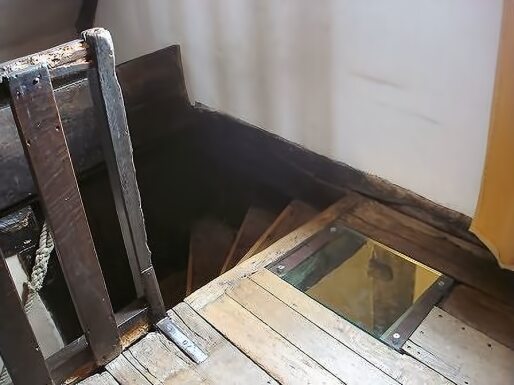
Charles, no longer feeling safe at Moseley, moved on to Bentley Hall near Walsall, the home of Colonel John Lane. He was assisted, among others, by the heroic Jane Lane, sister of the Colonel, who was described by John Evelyn as "an acute wit", "an excellent disputant" though "no beauty". Jane had obtained a permit for herself and a servant to travel to Abbot's Leigh in Somerset, to visit her friend who was having a baby. Abbot's Leigh lay near the seaport of Bristol. It was decided that Charles should pose as her servant, 'William Jackson' on the journey. The two were accompanied by Jane's sister, Withy Petre and her husband John Petre and a Royalist officer, Henry Lascelles. Lord Wilmot, who also travelled with them, stubbornly refused to be dressed in disguise; but rode openly half a mile ahead of the party, a courageous, but foolhardy move that must have served as a useful decoy. Cromwell offered a reward of £1,000 for information that led to Charles' capture but none betrayed him. He was at one point told by a blacksmith attending to the horses that "if that rogue" (meaning Charles) "were taken, he deserves to be hanged more than all else the rest for bringing in the Scots."
The attic at Boscobel House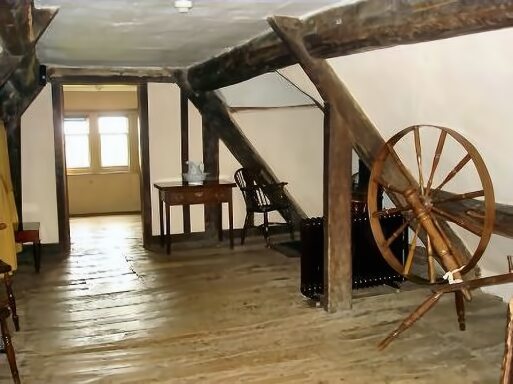
By 10th September, the small party had reached Stratford on Avon, where they spent the night with a relation of the Lanes. They arrived at their destination of Abbots Leigh on the evening of 12th September and stayed at the home of Mr and Mrs Norton, friends of Jane Lane, who were not made aware of Charles' true identity during his three-day stay at their home. Charles asked a servant at the house, who had been in the King's personal guard at Worcester, to describe his appearance and received the reply that "The King was at least three fingers taller than you." Attempts to find a ship at Bristol did not meet with success so the decision was reached to make for the south coast. On 17th September they reached Trent near Sherborne, where they stayed at Trent House, the home of Colonel Francis Wyndham, a Royalist officer. The king spent the following few weeks in hiding at Trent House while his friends tried to arrange a ship to convey him to safety in France.
From Sherborne, Charles boarded a ship to the continent at Shoreham, the captain, Nicholas Tattershall, was unaware of the identity of his illustrious passenger, having been informed he was a merchant escaping debts, but during negotiations at the George Inn in Brighton, Charles was recognised by a tipsy inn-keeper who fell on his knees. The captain thereafter demanded an additional £200 as danger money. On 16th October Charles and Lord Wilmot landed at Fécamp in France. Only hours after the King sailed, a troop of cavalry arrived at Shoreham to arrest him. Charles was to spend over eight years in exile until the Restoration of 1660.
Jane Lane was informed on 14th October that the Council of State were aware of the part she played in assisting Charles escape and herself escaped to France where she was welcomed at Charles Court in exile. She was to develop a friendship with the King's mother, Queen Henrietta Maria. Charles arranged for her to occupy the post of lady-in-waiting to his sister Princess Mary in Holland. Charles kept up an affectionate correspondence with Jane throughout his exile and often expressed the wish that could help her more. Jane received the following letter from Charles in response to a letter in which she stated he had probably forgotten her by now:-
1652 the last of June
Mrs Lane, I did not think I should ever have begun a letter to you in (chiding?) but you give me so just cause by telling me you are wearing out of (my?) memory that I cannot choose but tell you I take it very unkindly that after (all?) the obligations I have to you 'tis possible for you to suspect I can ever (be so?) wanting to myself as not to remember them on all occasions to your advan(tage?), which I assure you, I shall and hope before long I shall have it in my power to give you testimonies of my kindness to you which I desire. I am very (sorry?) to hear that your father and brother are in prison, but I hope it is of no (other?) score than the general clapping of all persons who wish me well and I am the more sorry for it. Now it hath hindered you from coming along with my (sister?) that I might have assured you myself how truly I am Your Most affectionate friend, For Mrs Lane
Charles R.
At the Restoration, Charles duly rewarded those who had helped him during his escape. Jane Lane was presented with a pension of £1,000 by a grateful king, and many gifts, including portraits of the King and a lock of his hair. Parliament also voted for her £1000 to buy a jewel to commemorate her service. Jane's brother was given a grant of land. Thomas Whitgreave and the Penderel brothers were presented with pensions of £200 to be paid to them and their descendants in perpetuity. The Penderel pension is still being paid today. Father Huddleston was taken into Queen Catherine of Braganza’s household. On his deathbed in 1685, Charles expressed a wish to die in the Roman Catholic faith. His brother James, Duke of York, ushered Huddleston into the King’s presence who secretly gave him the sacrament and the last rites.
The Battle of Flodden PreviousNext The Battle of Culloden
